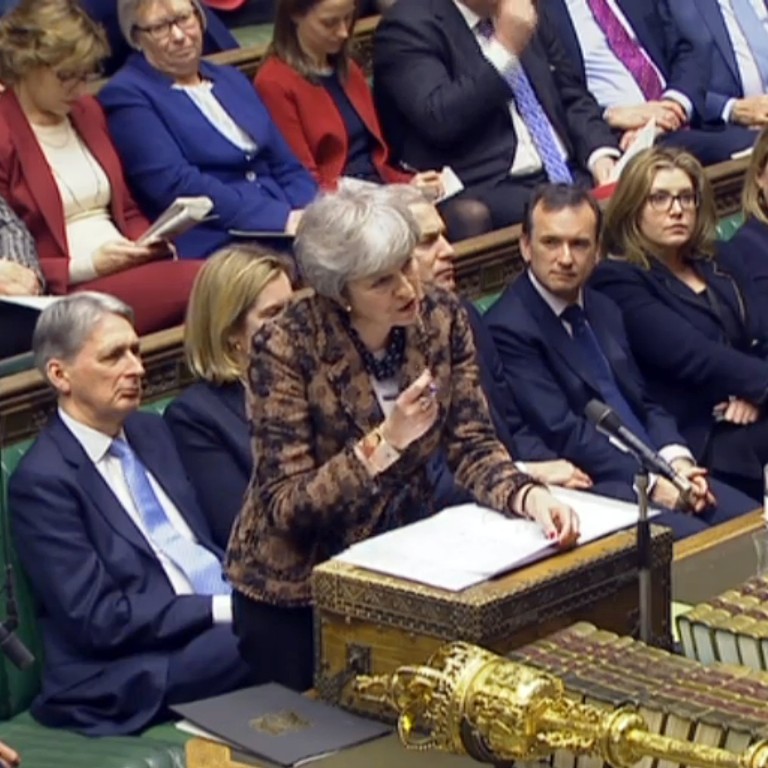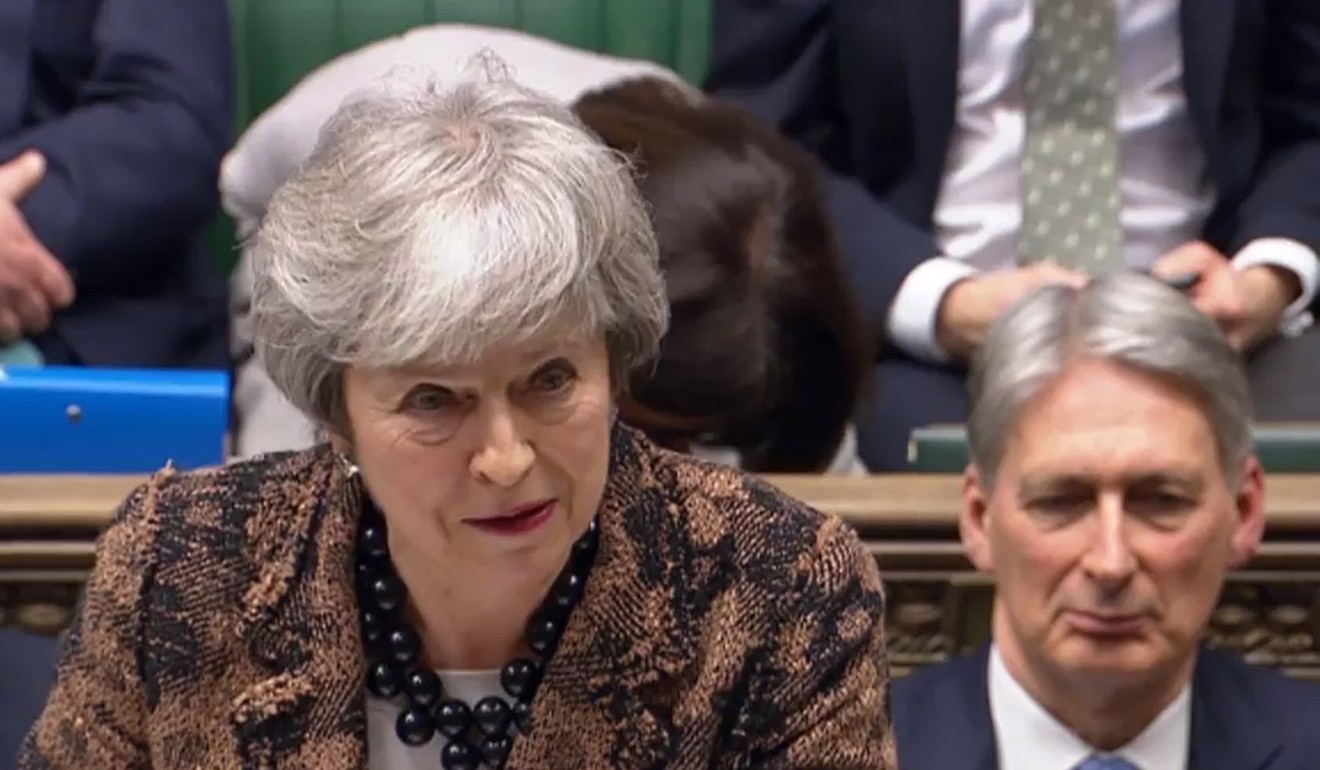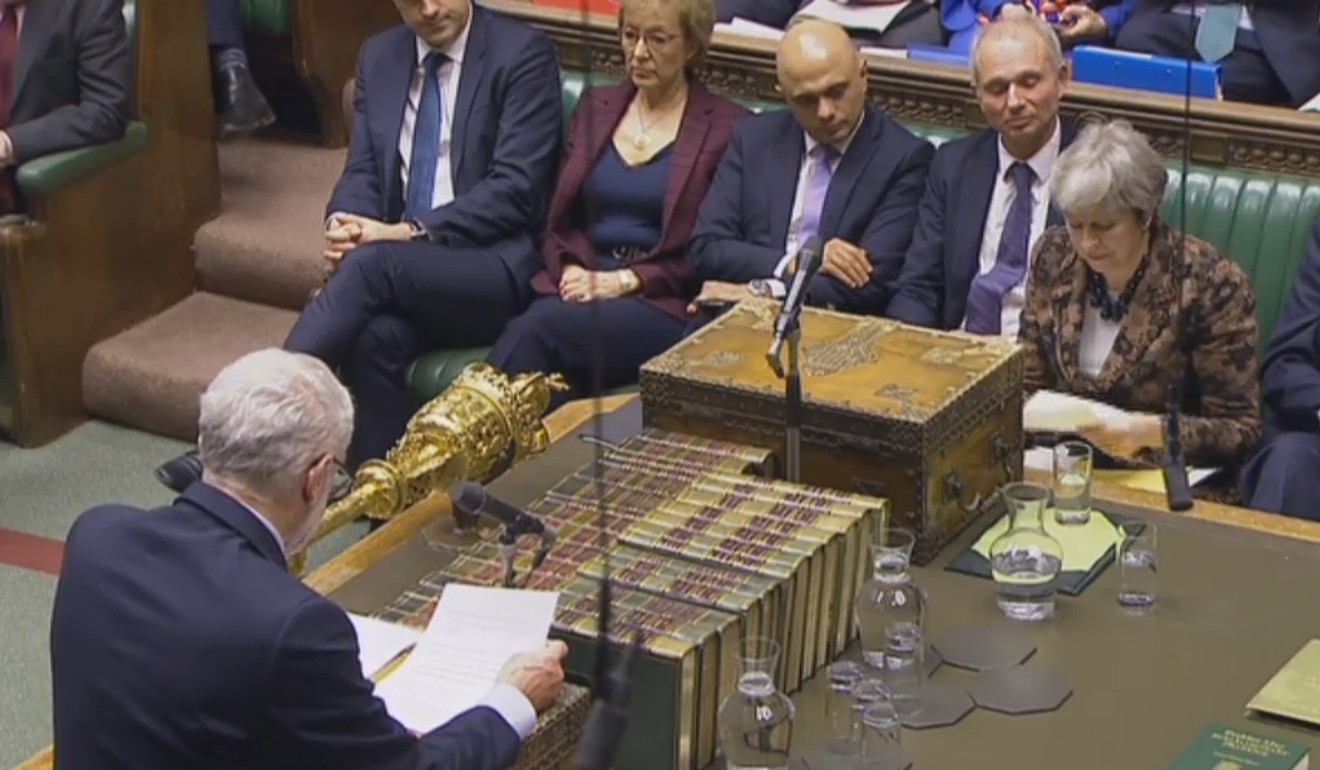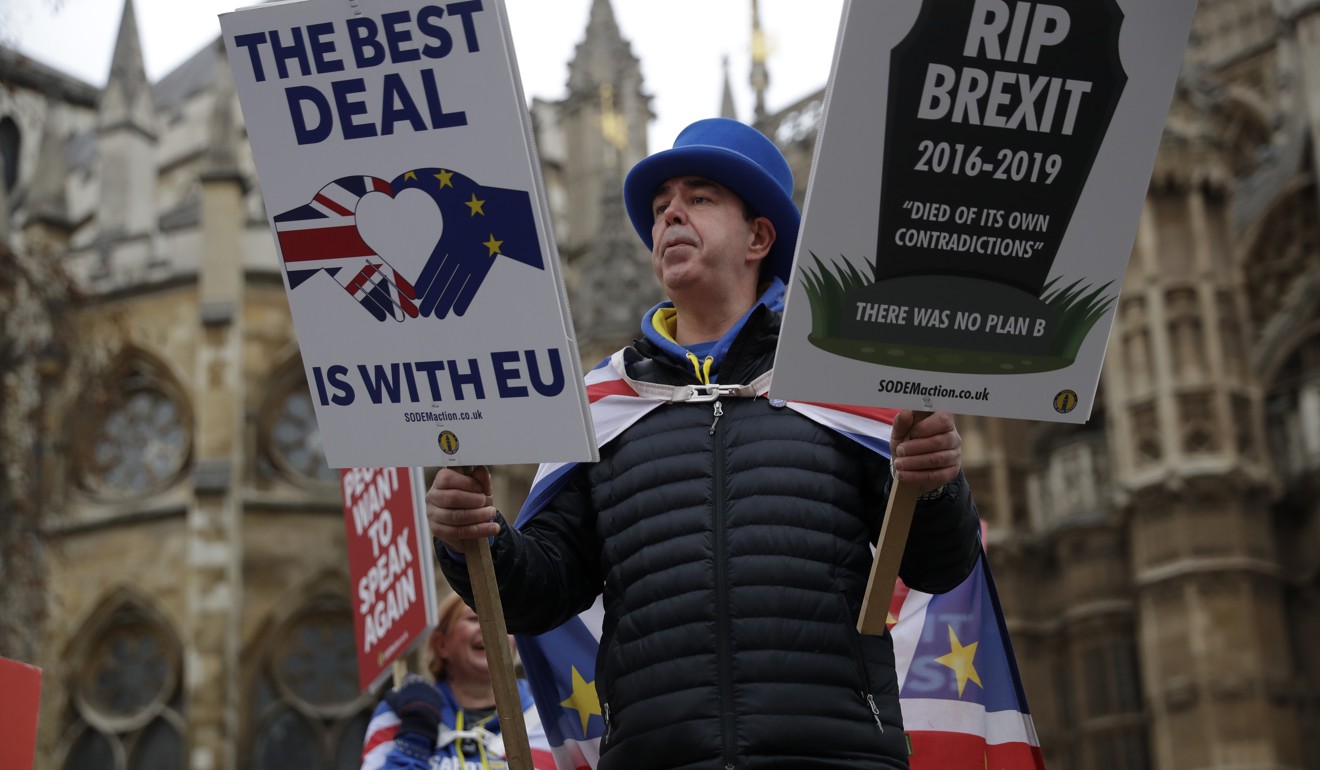
Odds of a ‘no-deal’ Brexit shorten as PM Theresa May struggles to find way out of crisis
- British PM May tells parliament she cannot rule out a chaotic ‘no-deal’ Brexit, and will not consider a second referendum
British Prime Minister Theresa May sought to break the parliamentary deadlock over Brexit on Monday by proposing to seek further concessions from the European Union on a plan to prevent customs checks on the Irish border.
But it was a modest proposal - and there is little time left until the United Kingdom is due to leave the European Union on March 29. There is no agreement in London on how and even whether it should leave the world’s biggest trading bloc, and a growing chance of a dramatic “no-deal” exit with no provisions to soften the economic shock.
After her Brexit divorce deal with Brussels was rejected by 432-202 lawmakers last Tuesday, the biggest defeat in modern British history, May has been searching for a way to get a deal through. She offered no new plan on Monday, and no dramatic moves.
She told parliament she could not take a “no-deal” Brexit off the table as there was no approved alternative yet, and that the EU would be unlikely to postpone Britain’s exit date - determined by the “Article 50” withdrawal notice - without an exit plan.
“No-deal will only be taken off the table by either revoking Article 50, which turns back the results of the referendum - the government will not do that - or by having a deal, and that is what we are trying to work out,” May said.
She said another referendum would strengthen the hand of those seeking to break up the United Kingdom and could damage social cohesion by undermining faith in democracy.

May vowed to be “more flexible” with lawmakers in trying to agree to changes to the Northern Irish backstop, an insurance policy to ensure there will be no return to border checks between the British province and Ireland.
“I will then take the conclusions of those discussions back to the EU,” May said. “My focus continues to be on what is needed to secure the support of this House in favour of a Brexit deal with the EU.”
UK PM May reaches out to rivals in Brexit deadlock
Hardline supporters of Brexit in May’s Conservative party object above all to the fact that Britain cannot unilaterally end the backstop, which would keep it in a customs union with the EU until an alternative way of ensuring an open border is found. Brussels says this provision is non-negotiable.
May’s task is gargantuan: Convince the EU to reopen negotiations and then secure enough changes to gain the support of at least 115 lawmakers who previously voted against the deal.

The EU, which has an economy more than six times the size of the United Kingdom, says it wants an orderly exit, but senior officials have expressed frustration and sorrow at London’s deepening crisis.
German Europe Minister Michael Roth said on Monday that even William Shakespeare would not have been able to think up a Brexit tragedy of such drama.
UK prime minister survives vote of no confidence after Brexit defeat
Amid fears that the world’s fifth largest economy could drop out of the EU without a deal, some lawmakers are planning to wrest control of the process from the government.
The EU’s chief negotiator, Michel Barnier, said the bloc was ready to work on the political declaration on future EU-UK ties that accompanies the binding withdrawal deal, but that the withdrawal deal already agreed was the best one possible.
In a sign of just how grave the political crisis has become, May was forced to deny a report by The Daily Telegraph that she was considering amending the 1998 Good Friday Agreement, which ended 30 years of violence in Northern Ireland. An open border with Ireland is widely seen as crucial to maintaining this peace.
Ireland’s European Affairs Minister Helen McEntee said Dublin would not engage in bilateral talks on Brexit, and would negotiate only as part of the remaining EU.
Once the motion on May’s proposals is published, lawmakers will be able to suggest amendments with alternative proposals.
‘Basically dead’: Brexit in chaos as UK Parliament rejects PM Theresa May’s divorce deal with EU
The 650-seat parliament is deeply divided over Brexit, with different factions supporting a wide range of options including leaving without a deal, holding a second referendum and seeking a customs union with the EU.
May chided Labour Party leader Jeremy Corbyn for not taking part in cross-party talks, but he said May was in denial about the failure of her deal.
“Her current deal is undeliverable,” he said.

Hilary Benn, an opposition Labour Party lawmaker who is chairman of parliament’s Brexit committee, said: “While her door may have been open, her mind has remained closed because she has rejected stopping us leaving the EU with no deal, even though she knows it would be disastrous.”
Jacob Rees-Mogg, chairman of the European Research Group of anti-EU lawmakers in May’s party, said Britain was most likely to leave without a deal.
But if the backstop were scrapped, he said most of the opposition from eurosceptics in May’s party would be removed.

